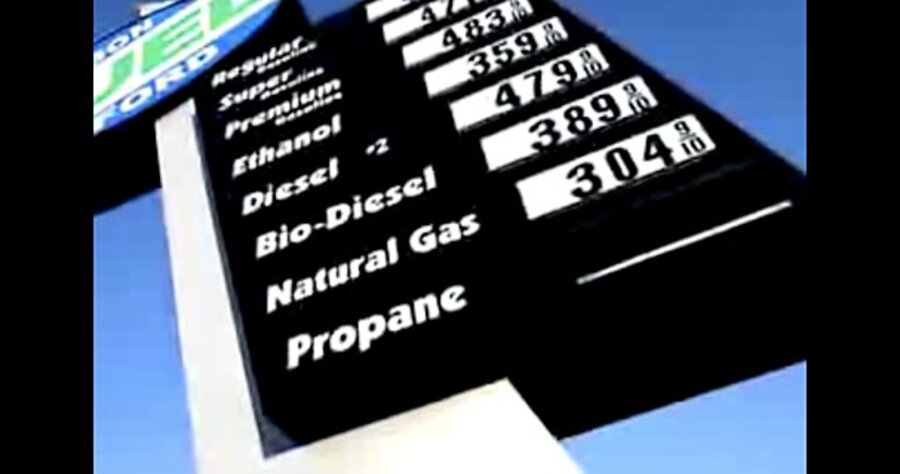An open-source engine?
Will the American cars of the future be powered by gasoline, biofuels, natural gas, or electricity? If the Set America Free Coalition has their way, the answer will be "all of the above."
Here's how Anne Korin, the group's chair, sees it: American transportation is subject to a monopoly of oil, which gives OPEC the ability to paralyze a huge chunk of the American economy. In order for the US to be truly independent, oil, she likes to say "needs to be stripped of its strategic value."
But switching all cars to some other fuel source would just swap one monopoly for another. Run all the cars on electricity, says Ms. Korin, and a single falling tree branch could cripple transportation for an entire region. Run them all on biofuels, and a drought could send fuel prices soaring.
"You don't want to go from 100 percent of one thing to 100 percent of another thing," she told me at an energy conference in Washington, DC, Thursday. "You want a system that's resilient."
The solution: an engine that runs on multiple energy sources, an "open fuel standard" platform that allows different fuels to compete with each other.
It's a little like a computer, whose hardware was built without specifying in advance exactly what software can and cannot run on it. Want to surf the Web with Firefox? Opera? Konqueror? Amaya? Flock? It's up to you. Your hardware doesn't discriminate.
Such engines already exist in what are known as flex-fuel vehicles, which make up more than seven million of the roughly 250 million passenger cars and trucks on America's roads. In most cases the vehicles can run on any combination of gasoline and ethanol, a combustible fuel made from corn, sugar, and other plants. But, as Korin tells me, many US drivers don't even know that their fuel tanks will accept anything other than gasoline.
The difference between a flex-fuel car and a conventional car is minimal. Ethanol and other biofuels tend to be more corrosive than conventional gasoline, so the fuel system requires some higher-quality parts. According to Korin, using these parts in manufacturing adds $100 to the cost of the vehicle.
The Set America Free Coalition's members, a relatively eclectic group that includes Tom Daschle, Gary Bauer, and former CIA director James James Woolsey, were among those who successfully got a bill introduced in Congress this summer. Titled the Open Fuel Standard Act, the bill would have mandated that, starting in 2012, 50 percent of new US automobiles be able to operate with E85 (a gasoline blend with 85 percent ethanol) or M85 (the same with methanol, a type of combustible fuel commonly made from methane gas), or be able to operate on biodiesel. In 2015, that figure would jump to 80 percent. [Editor's note: The original version misspelled Mr. Woolsey's surname.]
The bill died in committee, but its proponents plan to reintroduce it next year.
In 2007, automakers said that they could meet the 2012 target if enough ethanol-blend fuel is available.
Other types of flex-fuel vehicles can run on a greater variety of fuels. In Brazil, where flex-fuels make up almost a quarter of all cars, it's common to see cars that can run on pure ethanol, ethanol or methanol blends, or on compressed natural gas. What's more, many of these cars are made by Ford and General Motors.
You can even bring electricity into the mix. "Why not have a flex-fuel plugin hybrid?" Korin asks. She predicts that China's recently announced plug-in hybrid, which costs just over half of what the Chevy Volt is expected to cost, will soon be configured to run on flex fuels.
Set America Free estimates that such a vehicle, which would have an E85-hybrid engine powered by a battery that plugs into a standard electrical outlet, could achieve efficiency of up to 500 miles per gallon of gasoline (this doesn't count the ethanol being burned).
Of course, biofuels have their critics, particularly in light of the global spike in food prices. Does running vehicles on products made from corn and sugar force empty stomachs to compete with empty tanks?
Korin doesn't think so. The food crisis, she says, is primarily caused by growing prosperity in the developing world, rising oil prices, and a general rise in commodity prices caused by capital flight from the dollar (here's a YouTube video of her saying basically the same thing she told me.)
The role of biofuels in driving up food prices, Korin says, is "negligible."
Korin's claims are at very much odds with a July 2008 report by the World Bank [PDF], which found that 70 to 75 percent of the rise in food prices "was due to biofuels and the related consequences of low grain stocks, large land use shifts, speculative activity and export bans."
The World Bank's findings, while hotly contested, are consistent with a May 2008 report by the International Monetary Fund, which found that "rising corn-based ethanol production accounted for about three-fourths of the increase in global corn consumption in 2006-07," an increase that also drove up prices for edible oils and for meat.
Oxfam has also taken a strong stance against biofuels. A June 2008 report [PDF] says that their use has deepened global poverty.
But even if these reports are correct, there may still be a way to grow fuel without contributing to hunger. Brazil, where cultivation of sugarcane for ethanol is widespread, is often held up as a sustainable model. And so-called second-generation biofuels, which use inedible plant parts such as stems and leaves, or inedible plants such as switch-grass or jatropha, show some promise, as those made from algae.
I asked Korin if she thought that, perhaps in a few years, the next time I pull into the gas station, I'll be able to choose more than just my octane rating.
"Not a gas station," she corrected me. "A fuel station."





